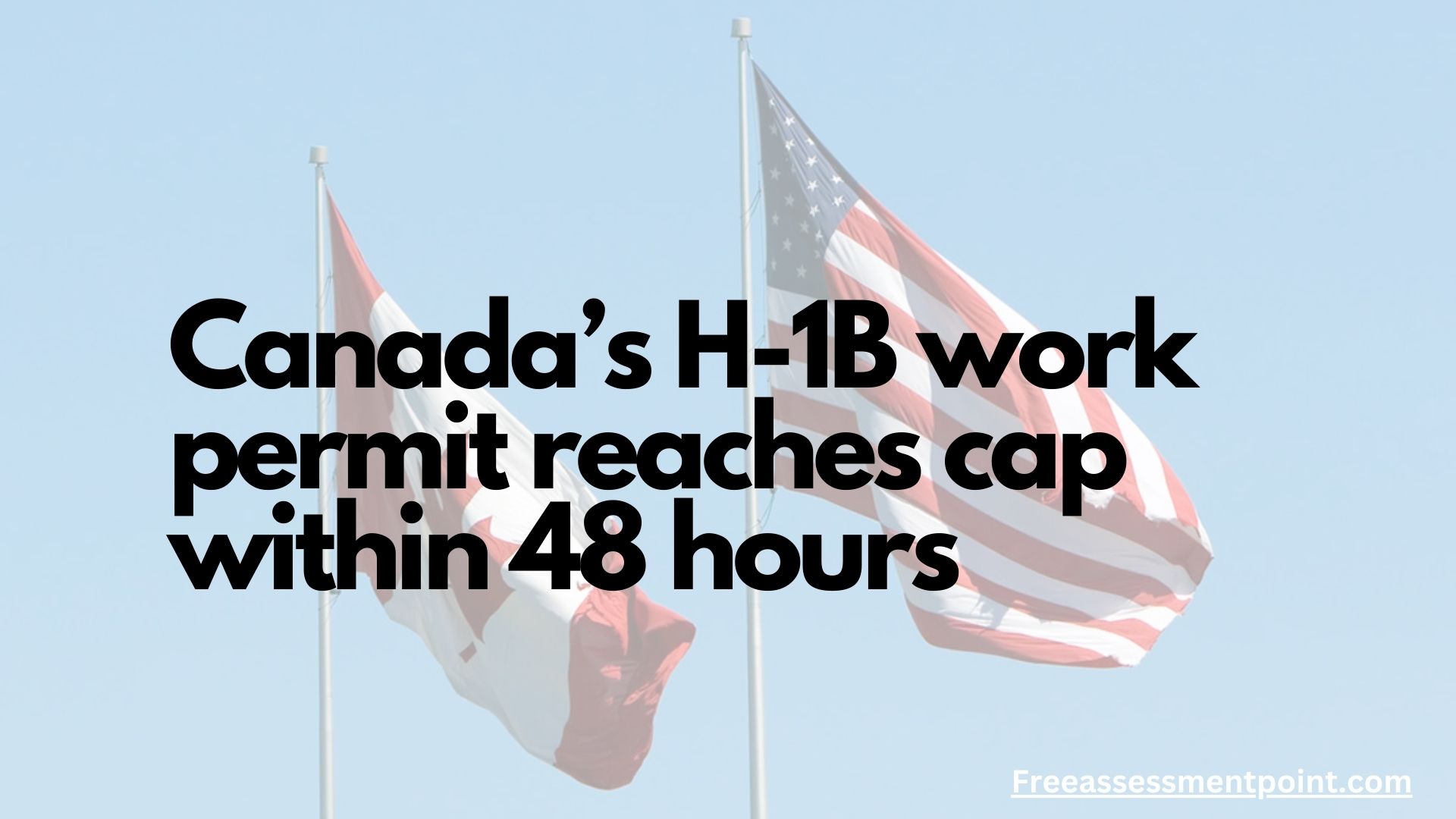Nearly 48 hours after it opened, the open work permit, which was supposed to be available for a year, or until 10,000 applications were received, has surpassed its cap.Canada’s H-1B work permit reaches cap within 48 hours: Upon accessing the IRCC site, a few customers of Immigration, Refugees and Citizenship Canada (IRCC) discovered that the recently introduced policy for H-1B holders in the United States had ended. In the late hours of July 17, users posted screenshots of the warning on social media. On July 16, applications for H-1B holders’ open work permits were available.
Part of the Tech Talent Strategy is the H-1B open work visa.
A variety of IRCC initiatives, like the H-1B open work visa, were designed to attract and retain tech talent. Canada unveiled its first Tech Talent Strategy on June 27.
Under the proposed legislation, qualified candidates would not need a job offer to work anywhere in Canada for a maximum of three years if they are H-1B holders. The wives and dependent children of successful candidates may accompany them, and if necessary, employment and study permits may be obtained for them. The deadline for applications was set for either one year or 10,000 applications, whichever came first.
Several media sources claimed that Canada was “poaching” talent from the United States by attempting to draw in H-1B holders.
Reporter Youyou Zhou said in a Washington Post editorial article that this Canadian move demonstrated the failure of American immigration policy.
- How to find jobs in Toronto
- Looking for Work in Canada
- Jobs for Teachers in Canada
- Laborer/Unloader of Containers
- Jobs in hospitality in Western Canada
The H-1B visa’s problem, according to Zhou, is that it is dependent on work. “Workers who lose their employment have no way of obtaining permanent residence. They will have to depart the nation if they are unable to locate another H-1B position within 60 days.
In contrast, a worker in Canada is permitted to remain as long as their immigration department, the IRCC, recognizes their status. Additionally, there are routes to permanent residence, including the Express Entry system, where applicants may be eligible for immigration with no prior Canadian experience at all.
Alternatives for H-1B holders to work in Canada
Should you have missed the H-1B measure, you nevertheless have opportunities to work in Canada.
For example, Canada is a favorable location for digital nomads, which means you may operate remotely there with simply your country’s standard travel permit. Without a work visa, you might live and work remotely in Canada for up to six months, during which you might be able to obtain employment there.
Additionally, you can qualify for accelerated processing via the Global Talent Stream if you have a work offer in Canada. Work permits for employees of qualified businesses or in qualified vocations may be processed in as little as two weeks. Compared to other work visa processes, you may begin working for your Canadian company sooner with this expedited route.
Even though you have never been to Canada, you may be qualified for Express Entry if you have job experience in a STEM field. Should you meet the requirements of an Express Entry-managed program, such the Federal Skilled Worker Program (FSW), you can get an invitation to apply for immigration to Canada via a STEM-focused draw.
Whether on an H-1B or not, STEM employees have a plethora of employment choices in Canada. Use Moving2Canada’s free Canada Immigration Quiz to see whether you qualify for Express Entry or any other Canadian immigration route. Create an account to get unique discounts from our partners, a checklist for Canadian immigration, and the ability to subscribe to our newsletter for real-time information on Canadian immigration.
